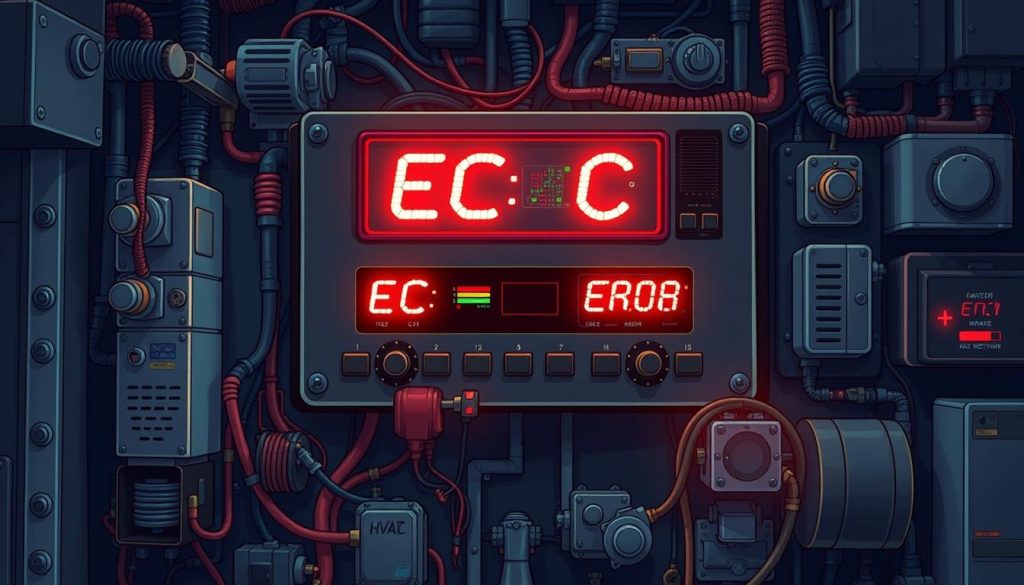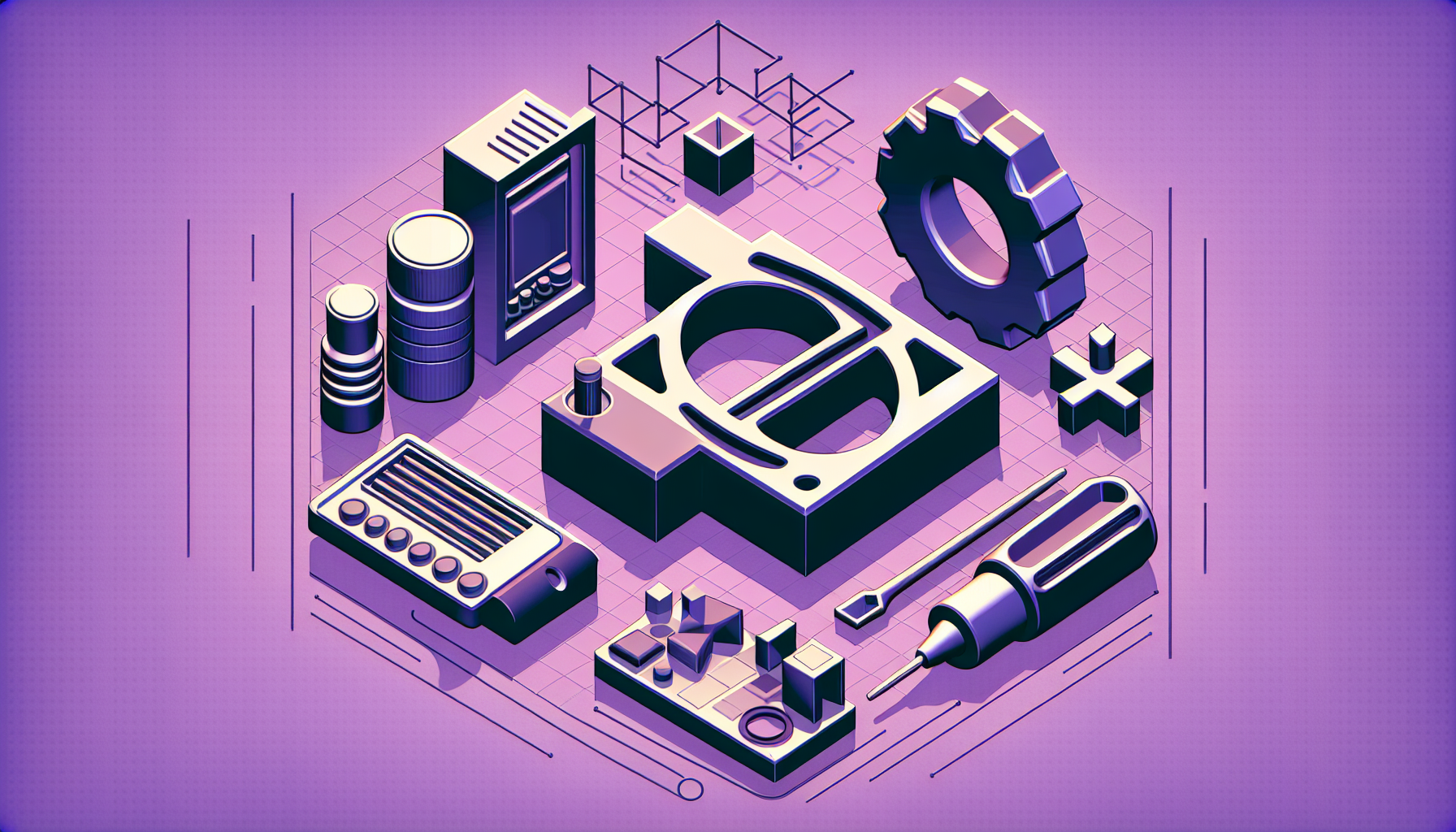If you work in the HVAC (Heating, Ventilation, and Air Conditioning) field, you might have seen “EC” and wondered what it means. EC stands for “electronic commutation,” a technology that has changed how HVAC systems work. This article will explain what EC means in HVAC, its benefits, and how it boosts energy efficiency and performance.
Key Takeaways
- EC stands for “electronic commutation,” a technology used in HVAC systems to improve energy efficiency and performance.
- EC motors combine the advantages of AC and DC motors, offering a more efficient solution for fan applications.
- HVAC energy codes and regulations are driving the adoption of energy-efficient technologies like EC motors to improve HVAC system energy conservation.
- EC motors use electronic controls to monitor functions and adjust input, maintaining high efficiency and reducing energy consumption.
- Separating the EC motor and fan components can further optimize fan efficiency and provide additional benefits.
What Does EC Stand for in HVAC?
EC motors, or “electronically commutated” motors, are key in many energy-saving HVAC systems. They mix AC and DC motor benefits for top performance and control. Unlike old DC motors with carbon brushes, EC motors use electronics for better efficiency and less upkeep.
EC Motors: Combining the Best of AC and DC
EC motors run on AC power but act like DC motors in speed control and efficiency. This design lets HVAC systems work better and use less energy. It’s a big win for building owners and HVAC pros looking to save on energy.
The main benefits of EC motors in HVAC are:
- They use less energy than traditional AC motors
- They offer precise variable speed control for better comfort
- They need less maintenance because they don’t have carbon brushes
- They work well with many HVAC units, like air handlers and furnaces
EC motors blend DC’s efficiency with AC’s durability, making them a top pick for energy-efficient HVAC. As we seek more sustainable and affordable building options, these brushless permanent magnet motors will be even more crucial in the HVAC world.
How EC Motors Work in HVAC Systems
Electronically commutated (EC) motors are changing the HVAC game. They use advanced electronics to adjust their performance constantly. This leads to high HVAC motor efficiency and accurate variable speed control.
EC motors’ efficiency comes from their electronic controls. Unlike AC motors, they adjust their speed in real-time. This lets them match the system’s needs, saving energy.
Efficient Speed Control
EC motors are known for their variable speed control. Their controls adjust the speed to fit the HVAC system’s needs. This means they use only the power needed, saving energy.
The brushless design of EC motors also boosts their efficiency. Without brushes, they last longer and need less maintenance than traditional motors.
In short, EC motors are a top choice for HVAC. Their advanced controls and brushless design offer precise variable speed control. They optimize energy use, adapting to the system’s changing needs.
EC Motors vs. Integrated EC Solutions
When choosing HVAC systems, you can pick between EC motors and integrated EC solutions. Both offer HVAC integrated solutions and EC motor efficiency. But, there are some key differences to think about.
Using separate EC motor and fan components can lead to a more compact HVAC design and modular HVAC components. This setup allows for a more flexible and easier-to-maintain system. It’s because the motor and fan are not together.
| EC Motors | Integrated EC Solutions |
|---|---|
| Separate motor and fan components | Motor and fan integrated into a single unit |
| Potential for more compact and modular design | Streamlined, all-in-one construction |
| Possibility of increased overall system efficiency | Potentially less efficient due to motor-fan interactions |
| Greater flexibility in system configuration | Limited flexibility in system configuration |
Also, separating the EC motor from the fan can improve airflow. This might make the EC motor efficiency and system performance better. The motor’s position in the fan can sometimes block airflow, lowering system efficiency.
The choice between EC motors and integrated EC solutions depends on your HVAC system’s needs. You might want a compact HVAC design and modular HVAC components. Talking to a professional HVAC expert can help you decide what’s best for you.
Benefits of Separating EC Motor and Fan Components
The way EC (Electronically Commutated) motor and fan components are placed is key to HVAC system efficiency. Separating them brings many benefits that boost your HVAC system’s performance.
Optimizing Fan Efficiency
One big plus of separating the EC motor from the fan is better fan efficiency. When the motor is inside the fan, it can block airflow and lower fan performance. By moving the motor away, the fan works better, without motor interference.
This makes your HVAC system efficiency better, as it doesn’t have to work as hard to move air. The modular design also means each part works at its best. This leads to the best results for your HVAC system.
Also, separating the motor and fan lets designers create HVAC solutions that fit specific needs. This modular design lets them adjust fan efficiency and EC motor placement for each project. This way, they can make your HVAC system efficiency even better.

Other Advantages of Separating EC Components
Separating the EC motor from other parts of the HVAC system brings more benefits than just better efficiency. It makes maintenance and servicing much easier for technicians. This is because the motor is outside the airflow.
This design makes HVAC component accessibility much better. Technicians don’t have to work around the fan to service the motor. This makes maintenance quicker and keeps your HVAC system running longer.
The HVAC system design flexibility also improves a lot. With the motor separate, designers can better fit the system to specific needs. This leads to more efficient and custom solutions.
Choosing to separate EC components improves HVAC system maintenance and opens up new design possibilities. This approach lets HVAC experts create more tailored and reliable systems. Each project gets a solution that fits its unique needs.
Potential Causes of EC Errors
EC motors are reliable, but sometimes they can have errors in HVAC systems. It’s important to know why these errors happen to fix them. Let’s look at the common reasons for EC error codes.
Refrigerant Leakage
Refrigerant leaks are a big reason for EC errors. When refrigerant levels go down, it can cause pressure issues. This leads to EC error codes. Finding and fixing these leaks is key to fixing the problem.
Faulty PCBs or Sensors
Bad PCBs or sensors can mess up EC motor controls, causing errors. If the motor’s parts don’t work right, it can act strangely or stop working. Replacing any broken parts is usually needed to fix these errors.
Power Surges or Overheating
Power surges or overheating can also cause EC errors. These problems can harm the motor’s electronics, leading to errors and system failures. Keeping the system’s electronics cool and protected from power issues helps avoid these problems.
By fixing these common causes of EC errors, like leaks, bad parts, and power issues, HVAC techs can solve the problems. This keeps the system running smoothly.

Diagnosing and Fixing EC Errors
When an HVAC troubleshooting issue pops up, and an EC error shows up, it’s key to get a skilled HVAC tech to check it out. They will first look over the system, check for HVAC repair needs, and examine the electronic controls and sensors. They’ll also test the power supply to find the main cause of the EC error.
Depending on the problem, the tech might need to fix or swap out parts like refrigerant lines, PCBs, or sensors. Sometimes, just turning the system off and on again can fix it temporarily. But, a real fix needs a deeper look and repair by a pro HVAC maintenance expert.
What are the common causes of EC errors in HVAC systems?
- Refrigerant leakage – Leaks in the refrigerant lines can cause the system to malfunction and trigger an EC error.
- Faulty PCBs or sensors – Issues with the electronic controls or sensors can lead to EC errors.
- Power surges or overheating – Electrical disturbances or excessive heat can damage HVAC components and cause EC errors.
How can an HVAC technician diagnose and fix EC errors?
- Inspect the HVAC system for any obvious signs of damage or wear.
- Check the refrigerant levels and look for potential leaks.
- Examine the electronic controls, including PCBs and sensors, for any malfunctions.
- Test the power supply to ensure it’s delivering the correct voltage and current.
- Reset the system and monitor for any recurring EC errors.
- Replace any faulty components, such as refrigerant lines, PCBs, or sensors.
- Ensure the system is functioning properly and meets all safety and efficiency standards.
By following these steps, an experienced HVAC technician can effectively diagnose and fix EC error diagnosis issues. This will get the system working right again and stop future problems.
Conclusion
EC motors have changed the HVAC game, bringing energy efficiency and precise control together. They use both AC and DC technologies to meet changing needs, saving a lot of energy. You can choose all-in-one EC solutions or separate components for better efficiency and maintenance.
Knowing how EC motors work is key for HVAC pros and homeowners. They improve energy use, system performance, and maintenance ease. Keeping up with EC motor tech and fixing issues ensures your system runs well, saving money and making your home more comfortable.
The HVAC world is moving towards EC motors, making systems more efficient and green. By using this tech and keeping your system in check, you help the planet. You also save energy and money, making your home better for you and the environment.





0 Comments